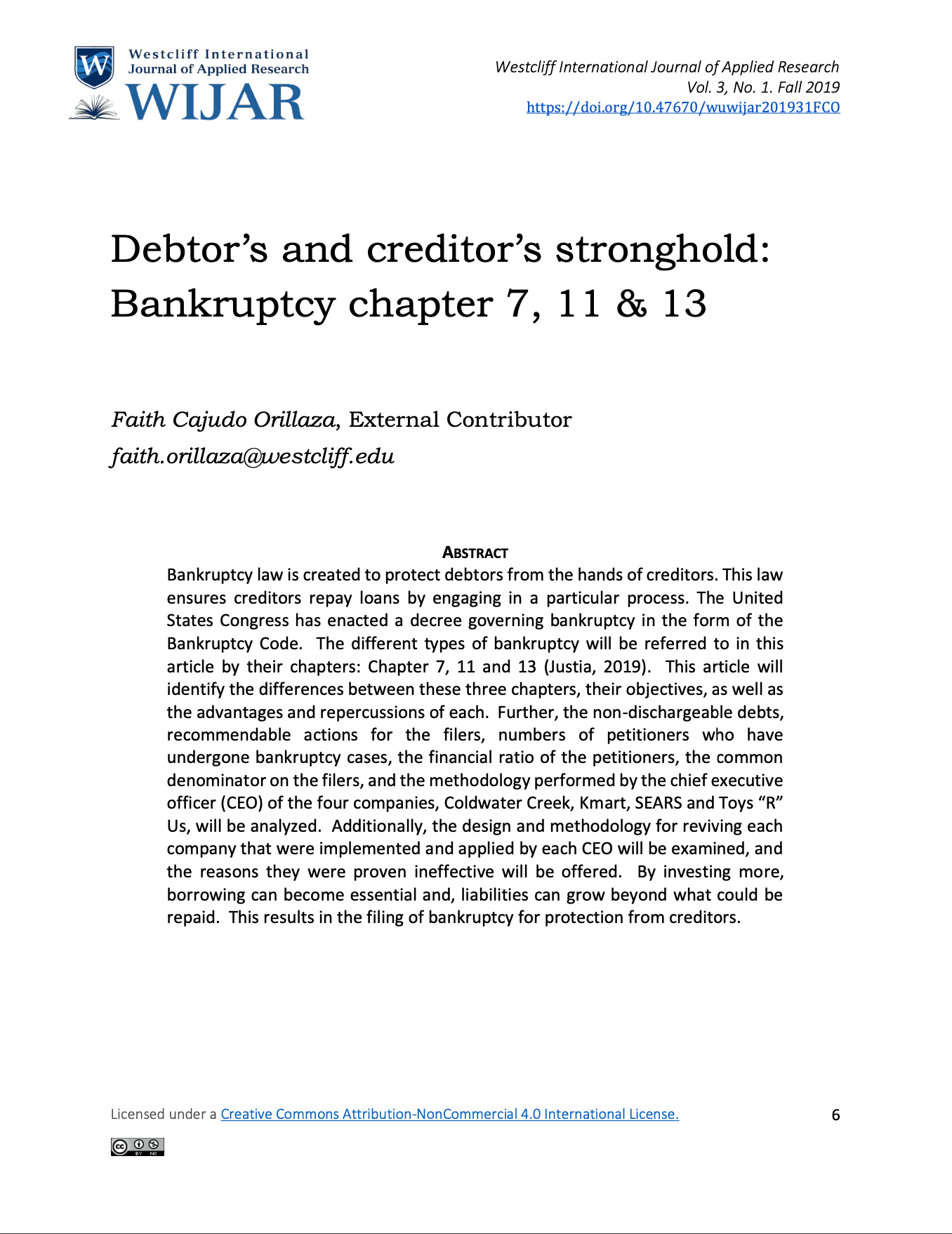Debtor’s and creditor’s stronghold: Bankruptcy chapter 7, 11 & 13

Author: Faith Cajudo Orillaza
Issue: Fall Issue, 2019
Download ArticleAbstract
Bankruptcy law is created to protect debtors from the hands of creditors. This law ensures creditors repay loans by engaging in a particular process. The United States Congress has enacted a decree governing bankruptcy in the form of the Bankruptcy Code. The different types of bankruptcy will be referred to in this article by their chapters: Chapter 7, 11 and 13 (Justia, 2019). This article will identify the differences between these three chapters, their objectives, as well as the advantages and repercussions of each. Further, the non-dischargeable debts, recommendable actions for the filers, numbers of petitioners who have undergone bankruptcy cases, the financial ratio of the petitioners, the common denominator on the filers, and the methodology performed by the chief executive officer (CEO) of the four companies, Coldwater Creek, Kmart, SEARS and Toys “R” Us, will be analyzed. Additionally, the design and methodology for reviving each company that were implemented and applied by each CEO will be examined, and the reasons they were proven ineffective will be offered. By investing more, borrowing can become essential and, liabilities can grow beyond what could be repaid. This results in the filing of bankruptcy for protection from creditors.
